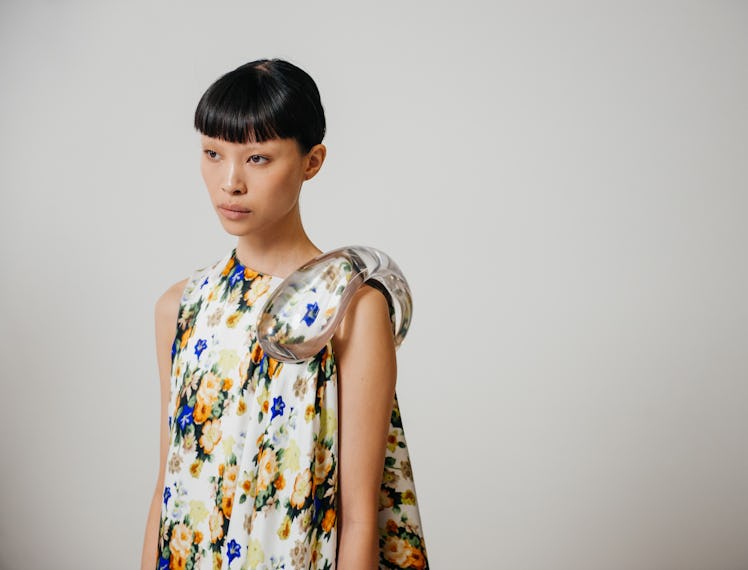Loewe Subverts Basic Fashion, Again and Again, for Fall 2024

At Jonathan Anderson’s Loewe, surprising quirks and unusual twists and turns are the norm. A dedicated fan of surrealism, the designer often takes the inner workings of everyday wardrobe staples and turns them on their head. Such was the case for Loewe’s fall 2024 show, which was staged inside a top-to-bottom spring-green venue with pieces that toyed with the idea of subversion and artistic flourish.
Draped dresses with cutouts made their runway debut with big belt buckle embellishments. Next came the assortment of flowing skirts, ballooning pants, and silky button-downs—all average wardrobe staples for most people, but under the eye of Anderson, they came with personality. Here, they were covered in natural wonders like eye-popping florals or kitschy vegetables. The brand itself left hints all over its Instagram, with models holding decorative plates featuring those same motifs (by Chelsea Porcelain Manufactory—one of the first porcelain manufactories in England, established around 1745, according to Loewe) lensed by David Sims. Elsewhere, paintings by Albert York were integrated into the show venue and on clothing.
The most interesting looks in the collection were the array of stiff, two-dimensional dresses, which resembled the kind of clothing you’d apply to a paper doll. These fascinations came in the form of a black-and-white narrowly striped dress with triangular features under the arm, or a textural white dress with the image of a dog in the grass. Anderson has often expressed his interest in taking influence from our digital-first, screen-heavy culture—and here, it showed.
The real-world girl on the go sprinted to life with practical flat shoes, heelless boots, and very big bags. To contrast that, elements of flourish came through in minor details that had major impact. Think: a plaid dress that faded to a solid color, architectural white draped panels on black dresses, and puffy tops with belt buckles disguised in folds of fabric. Oversize cargo pants came with exceptionally large proportions, suit vests were styled as tops, and lightweight sets mirrored pajamas. A polo top was transformed with a cloud of massive volume at the hem. Globe-like motifs were turned into pieces that looked like modified cummerbunds.
Formal dressing certainly isn’t dead, it just looks more interesting when intertwined with the ultra-casual. Tuxedo jacket elements were reworked into blazers with flowing long tails on each side, paired with pants that were not just baggy, but enormously bulky in a chic way. These are the kinds of themes and silhouettes that only Anderson dares to approach—yet somehow, they still exist in the realm of wearability.